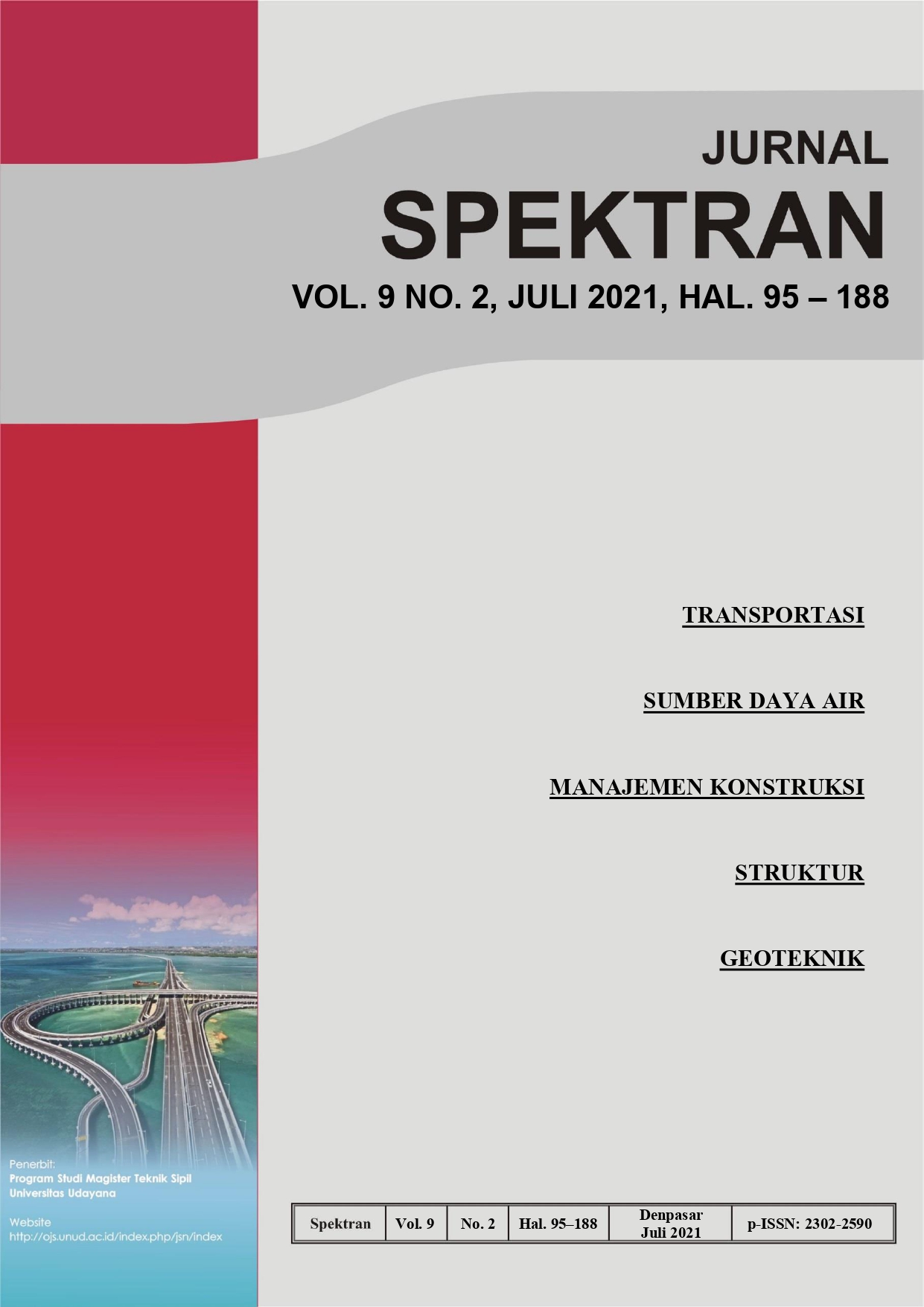EVALUASI RISIKO PROYEK PEMBANGUNAN GEDUNG RSIA PURI BUNDA TABANAN - BALI
Abstract
The project implementation process from planning to implementation sometimes encounters problems ranging from cost, quality and time. In the implementation process, there are obstacles, namely the soil conditions in the image do not match the actual conditions and the architectural work undergoes a design change, because the previously planned floor plan does not match the desired function. These problems lead to the need for additional costs and additional time for project completion. This study aims to identify, assess risk acceptance to determine dominant risk, mitigate risk and determine risk ownership that will be obtained as a result of these problems. The study used a qualitative descriptive method. Data were collected by means of brainstorming, interviews, observations and questionnaires. Questionnaires were distributed to 28 respondents. The results show that there are 40 valid risk identifications. There are 10 unacceptable risks and 21 undesirable risks which include dominant risk and 9 acceptable risks that do not require mitigation measures. Mitigation is carried out with 3 types of actions, namely by reducing, transferring and holding risks. The dominant risk is unacceptable, namely the occurrence of design changes more than once. Mitigation is done by ensuring the design is approved by all parties involved or who have an interest in the design to be carried out such as the owner or management of the hospital so that the design is in accordance with the desired function so that there is no design change more than once. The allocation of ownership of the largest risk is the responsibility of the contractor, namely the risk of financial problems to the contractor. The dominant risk impact on the additional cost and time added to this work has a major impact on the technical and project aspects. The total amount of additional costs is Rp. 10,825.600.000,- and the total additional time is 117 days on the project.




